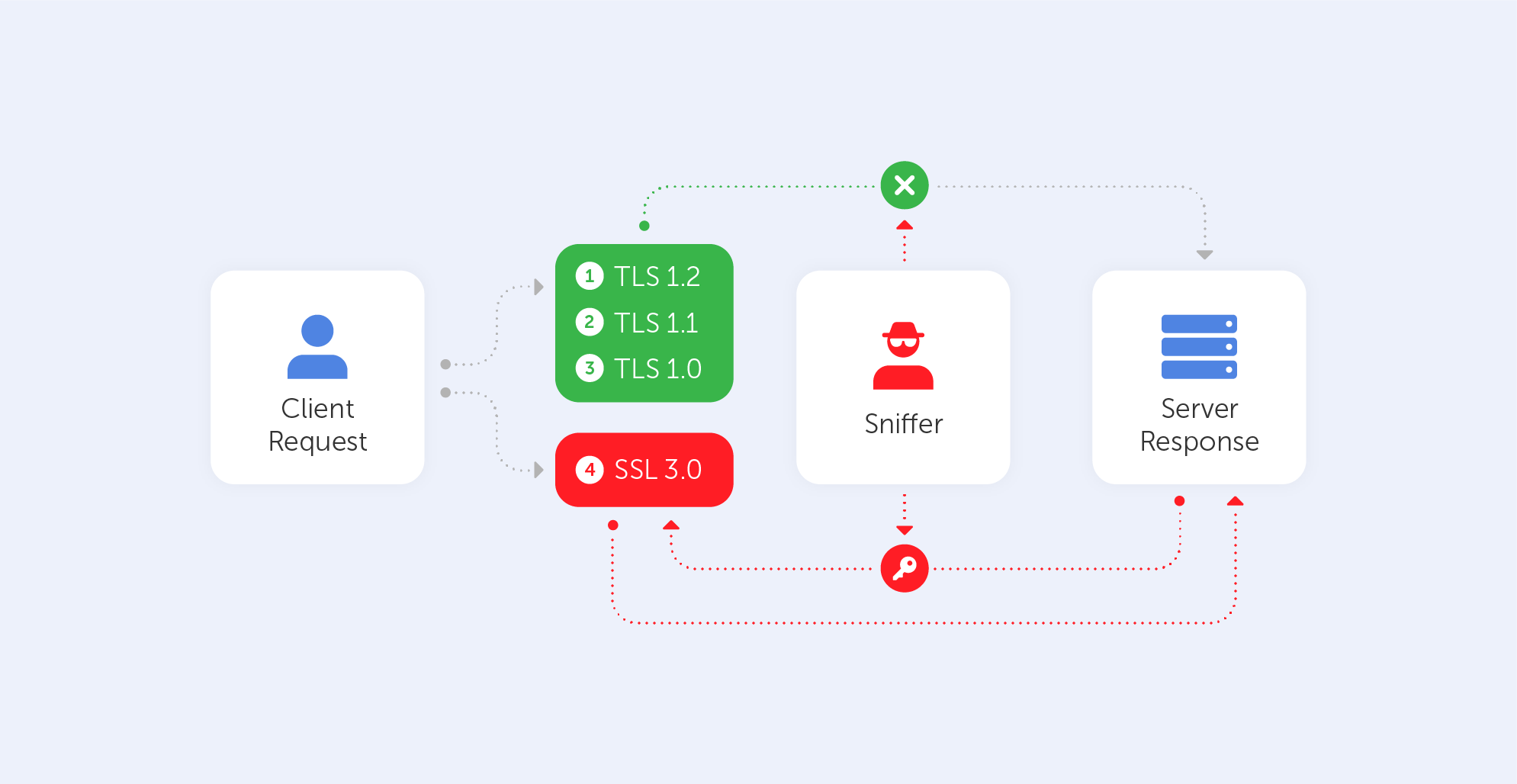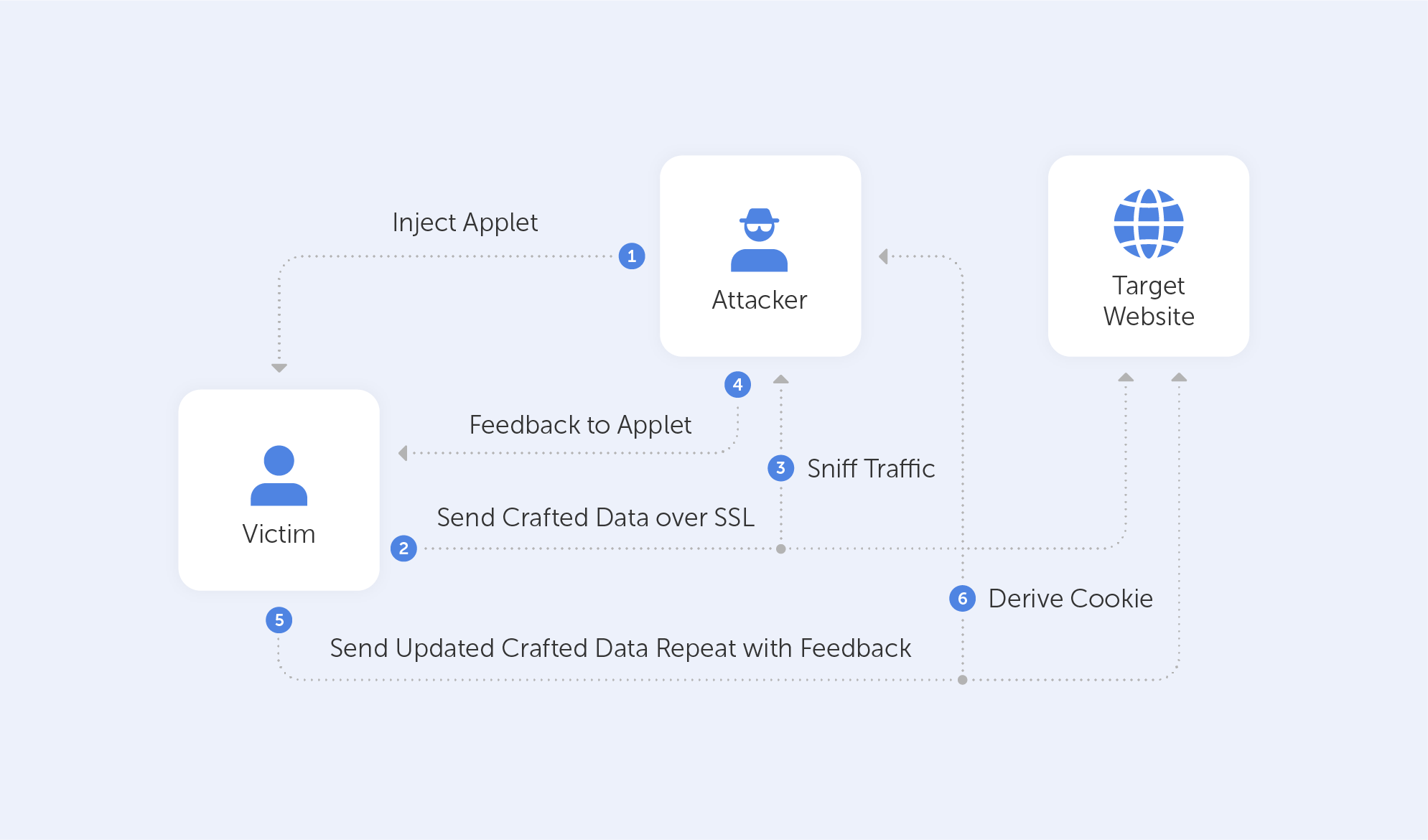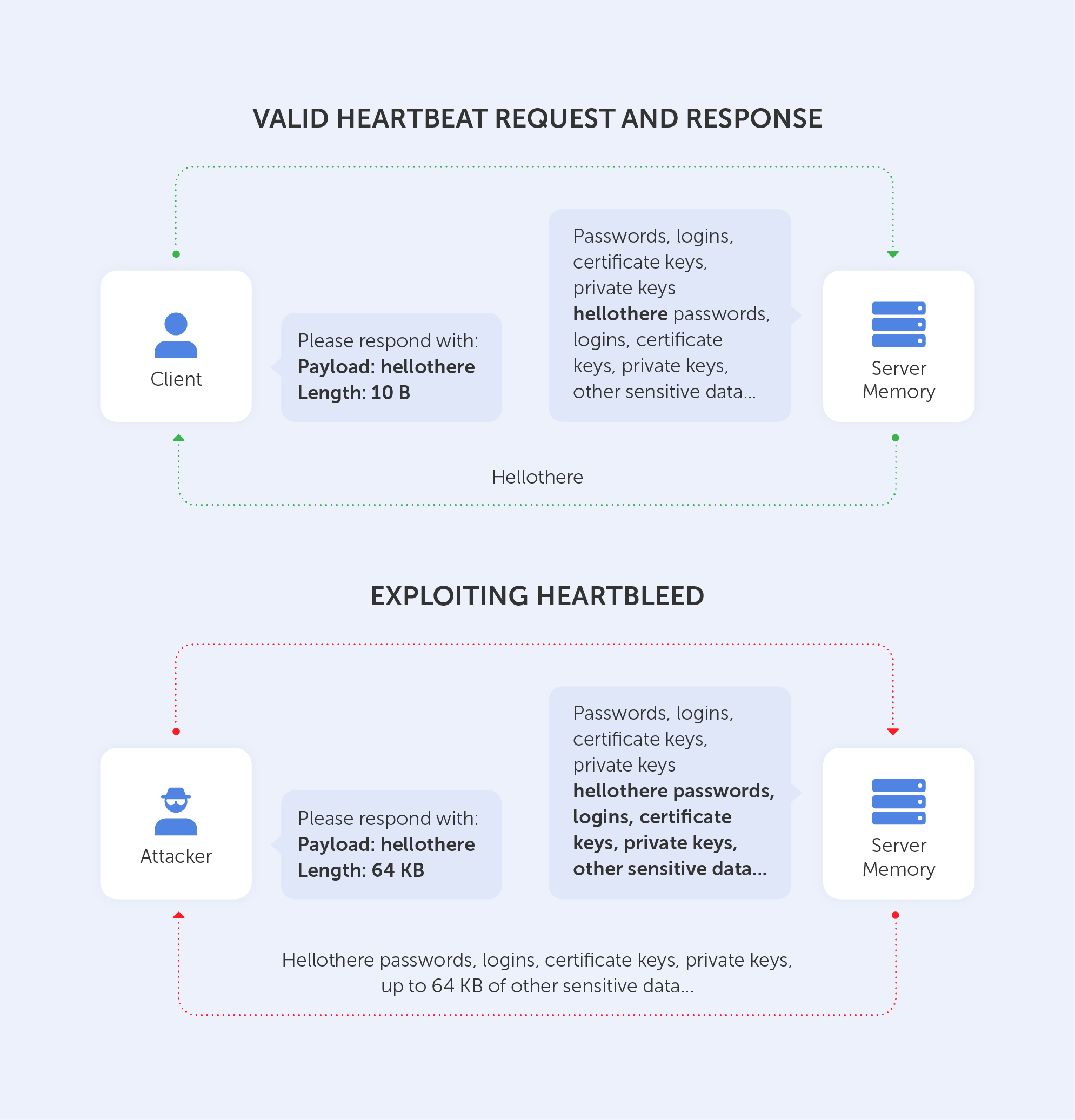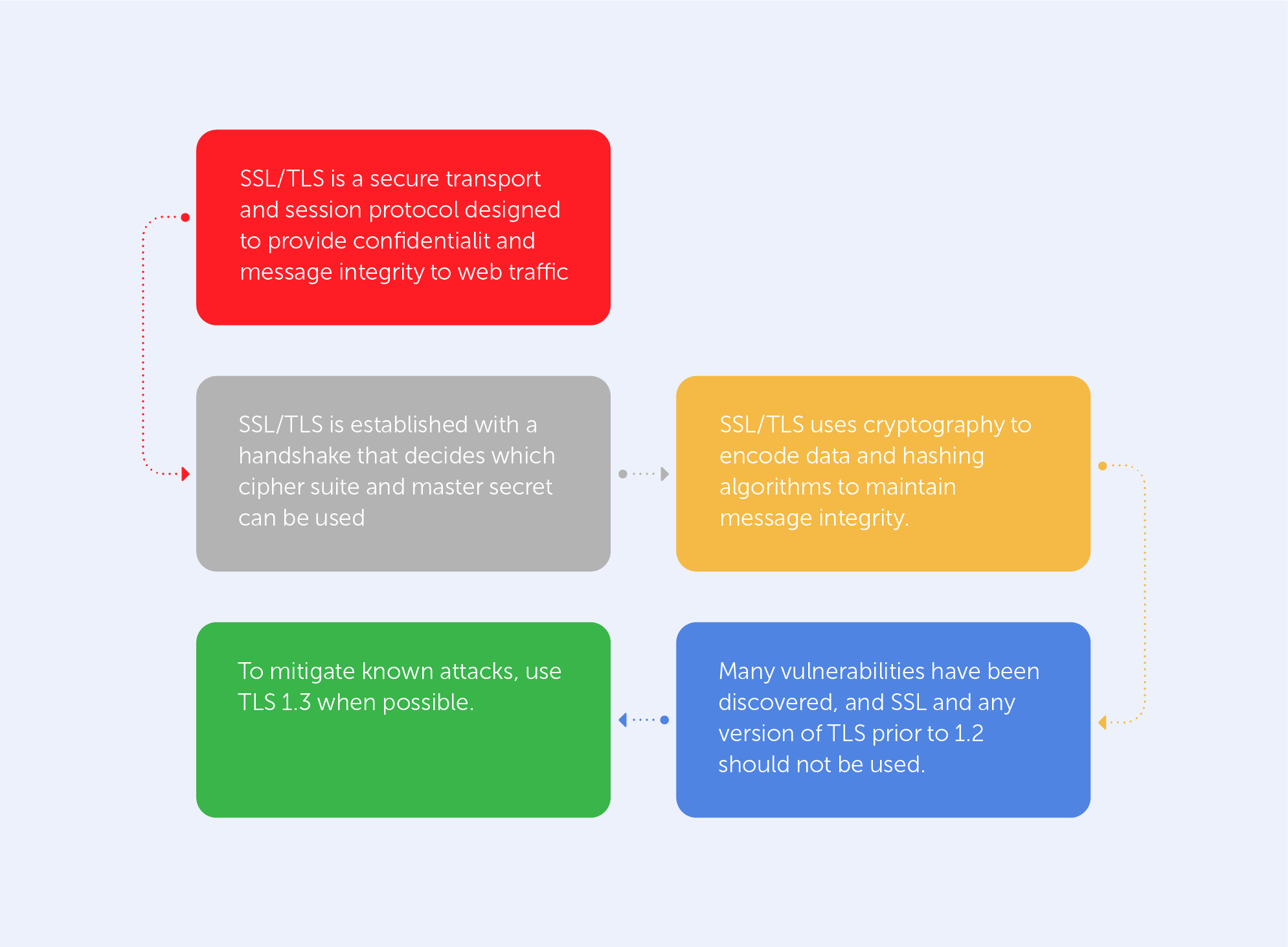What are SSL Vulnerabilities?
The Secure Sockets Layer (SSL) and the Transport Layer Security (TLS) cryptographic protocols have seen their share of flaws, like every other technology. In this article, we would like to list the most commonly-known vulnerabilities of these protocols. Most of them affect the outdated versions of these protocols (TLS 1.2 and below), although one major vulnerability was found that affects TLS 1.3.
POODLE
This cute name should not misguide you – it stands for Padding Oracle On Downgraded Legacy Encryption. Not that nice after all, right? It was published in October 2014 and it takes advantage of two peculiar facts. The first one is that some servers/clients still support SSL 3.0 for interoperability and compatibility with legacy systems. The second one is a vulnerability related to block padding that appears in SSL 3.0. Here is a link to that vulnerability on the NIST NVD database.
How does it work?
As mentioned before, this vulnerability comes from the Cipher Block Chaining (CBC) mode. Those block ciphers use blocks of a fixed length, so if the data in the last block is shorter than the block’s size, it is filled by padding. The server, of course, ignores such padding by default, it only checks whether the length is correct and verifies the Message Authentication Code (MAC) of the plaintext. In practice, this means that the server cannot verify if the content inside the padding has been altered in any way.
An attacker is able to modify padding data and then simply waits for the server’s response. Attackers can recover the contents byte-by-byte by watching server responses and altering the input. It usually takes no more than 256 attempts to reveal one byte of a cookie, which equates to a maximum of 4096 queries for a 16-bit cookie. Just by using automated scripts, the hacker may retrieve the plaintext char by char. Such a plaintext may be anything from a password to a cookie or a session. So, without even knowing the encryption method or key, a sniffer may easily decipher a block.

BEAST
The Browser Exploit Against SSL/TLS attacks was disclosed in September 2011. It affects browsers that support TLS 1.0, because this early version of the protocol has a vulnerability when it comes to the implementation of the above-mentioned CBC mode. Here’s a link to it in the NIST NVD database.
How does it work?
This kind of attack is usually client-side, so in order for it to succeed, an attacker should, in one way or another, have some control of the clients’ browser. After getting access to a browser, the attacker would typically use MITM to inject packets into the TLS stream. After such an injection, the only thing left is to guess the Initialization Vector (IV) – a random block of data that makes each message unique. This is used with the injected message and then simply compared with the results of the needed block.

CRIME
The Compression Ratio Info-leak Made Easy (CRIME) vulnerability affects TLS compression. The Client Hello message optionally uses the DEFLATE compression method, which was introduced to SSL/TLS to reduce bandwidth. The main method used by any compression algorithm is to replace repeated byte patterns with a pointer to the first instance of such sequences. As a result – the bigger the repeated sequences, the more effective such a compression is. You can visit this link to locate this vulnerability in the NIST NVD database.
How does it work?
Let’s imagine that a hacker is targeting cookies. He knows that the targeted website creates a cookie for each session named ‘ss’. The DEFLATE compression method replaces repeated bytes and our antagonist knows that. Therefore, he injects Cookie:adn=0 to the victim’s cookie. The server would, of course, append 0 to the compressed response, because Cookie:adn= has been already sent, so it is repeated.
After that, the only thing for an attacker to do is to inject different characters and then monitor the size of the response.
The injected character is contained in the cookie value if the answer is shorter than the first one, hence the compression. The response will be longer if the character is not in the cookie value. Using this strategy, an attacker can recreate the cookie value using the server's feedback.

By the way, the BREACH attack is very similar to CRIME, but it targets HTTP compression instead.
Heartbleed
Heartbleed was a major vulnerability discovered in the OpenSSL (1.0.1) library's heartbeat extension. This extension is used to maintain a connection so long as both participants are online. Here is its link on our beloved NIST NVD database.
How does it work?
The client sends the server a heartbeat message with a payload containing data and its size + padding. The server will respond with the same heartbeat request as the client.
The vulnerability comes from the fact that if the client sent a false data length, the server would respond with a heartbeat response containing not only the data received by the client but, because it needs to fill the length of the message, also with random data from its memory. A very unfortunate technical solution, isn’t it?

Leaking such unencrypted data may result in a disaster. It is well-documented that by using such a technique, an intruder may obtain a private key to the server. Moreover, if the attacker has the private key – well, that means he’s able to decrypt all the traffic to the server. I guess we don’t need to tell you why that’s no good, right?
The entire list of vulnerabilities may be found in this wonderful report by the Health Sector Cybercecurity Coordination Center. It not only lists all above-mentioned techniques in a very informative manner but also provides a very neat table of all ‘Known Threats to TLS/SLS’ (pp. 24-26).
Instead of a long conclusion, let’s just look at the last page of that report:

The green cell of the chart explicitly states how to get rid of most known vulnerabilities. Indeed, if you’re not interested in trawling through the nooks and crannies of the Library of Alexandria’s floor on Cybersecurity, the best way to track existing SSL/TLS vulnerabilities is by visiting csrc.nist.gov once in a while. You might even consider making it your homepage.

